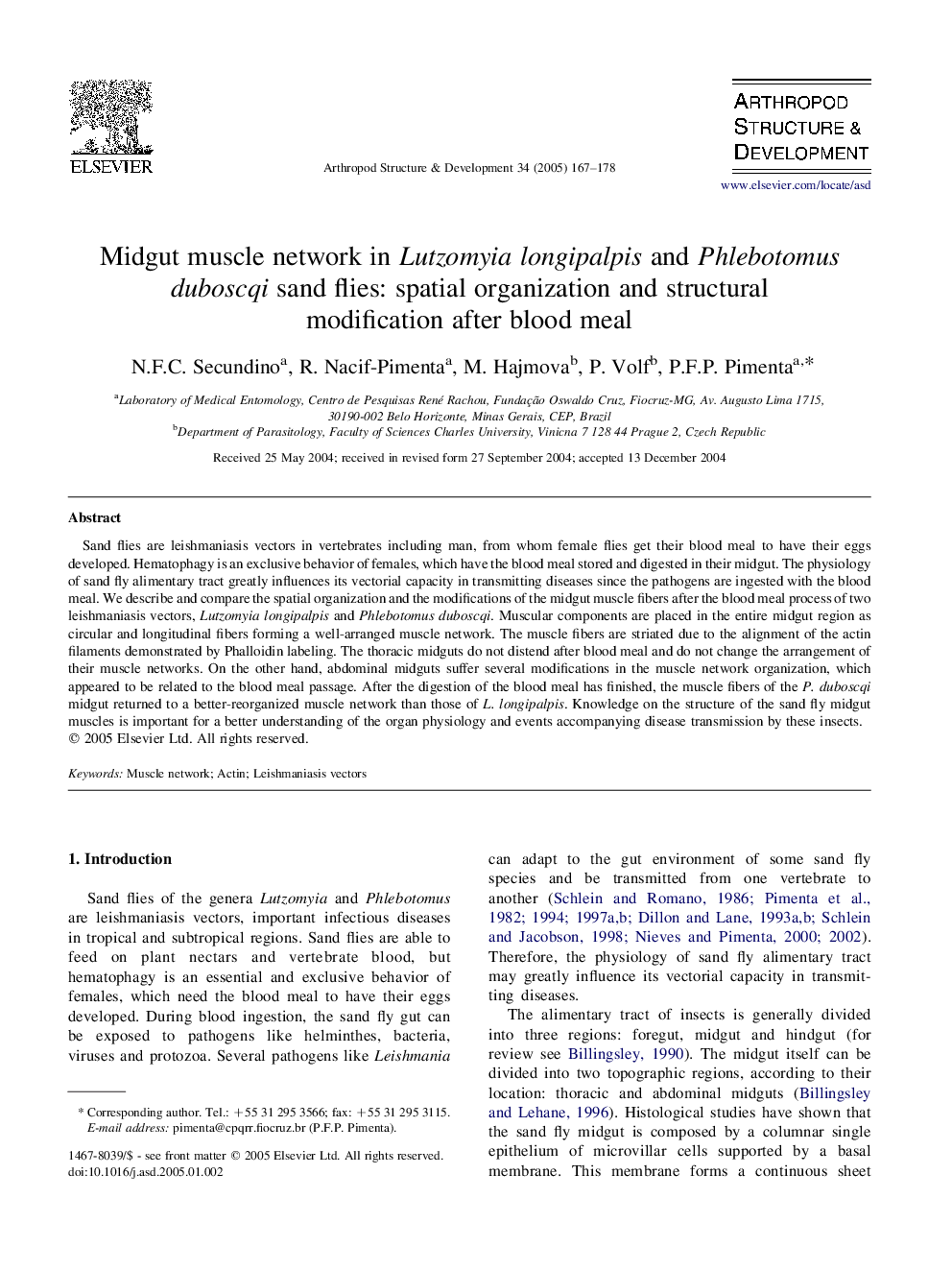| Article ID | Journal | Published Year | Pages | File Type |
|---|---|---|---|---|
| 9104168 | Arthropod Structure & Development | 2005 | 12 Pages |
Abstract
Sand flies are leishmaniasis vectors in vertebrates including man, from whom female flies get their blood meal to have their eggs developed. Hematophagy is an exclusive behavior of females, which have the blood meal stored and digested in their midgut. The physiology of sand fly alimentary tract greatly influences its vectorial capacity in transmitting diseases since the pathogens are ingested with the blood meal. We describe and compare the spatial organization and the modifications of the midgut muscle fibers after the blood meal process of two leishmaniasis vectors, Lutzomyia longipalpis and Phlebotomus duboscqi. Muscular components are placed in the entire midgut region as circular and longitudinal fibers forming a well-arranged muscle network. The muscle fibers are striated due to the alignment of the actin filaments demonstrated by Phalloidin labeling. The thoracic midguts do not distend after blood meal and do not change the arrangement of their muscle networks. On the other hand, abdominal midguts suffer several modifications in the muscle network organization, which appeared to be related to the blood meal passage. After the digestion of the blood meal has finished, the muscle fibers of the P. duboscqi midgut returned to a better-reorganized muscle network than those of L. longipalpis. Knowledge on the structure of the sand fly midgut muscles is important for a better understanding of the organ physiology and events accompanying disease transmission by these insects.
Keywords
Related Topics
Life Sciences
Agricultural and Biological Sciences
Insect Science
Authors
N.F.C. Secundino, R. Nacif-Pimenta, M. Hajmova, P. Volf, P.F.P. Pimenta,
